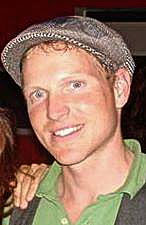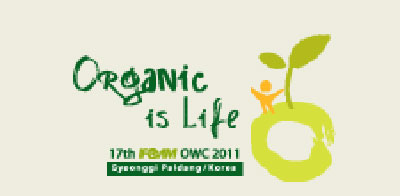 |
| MOFGA member Cory Whitney is in Korea helping the Korea Organic Farming Association (KOFA) plan for a conference of the International Federation of Organic Agriculture Movements. |
By Cory Whitney
Hello fellow Mainers, from the “Slow City” of Namyangju in the Gyeonggi Province of South Korea, about 20 km from the capital city of Seoul. Namyangju is called a Slow City because it is part of Cittaslow, an aspect of the Slow Food movement. I arrived here this spring to work for the Korea Organic Farming Association (KOFA) to help plan the 17th Organic World Congress (OWC) of the International Federation of Organic Agriculture Movements (IFOAM), which is scheduled for Sept. 26 to Oct. 5, 2011 – the first IFOAM OWC in Asia.
Organic Agriculture in South Korea
South Korea experienced major famines in the ‘60s and ‘70s. Escaping from famine became a national priority, and agriculture focused on increasing yields through the use of chemical fertilizers and pesticides. Productivity doubled and food shortage issues were resolved in the late 1970s, but by then agrochemicals had contaminated the soil, threatening human health and ecosystems, and caused the disappearance of many species. The people began to voice concerns about the safety of conventional agricultural systems.
In March of 1991, Doosan Electronics dumped 30 tons of phenol (carbolic acid) into the Nakdong River, contaminating the drinking water of 15 million citizens. This general corporate disregard for social and environmental responsibility in favor of economic efficiency outraged the public and spurned a civic and environmental movement.
Organic agriculture bloomed from this movement and has been growing ever since. South Korea now has 8,000 farms with around 20,000 acres of farmland. About 3 percent of these farms are organic, and the domestic organic food market has been growing by more than 40 percent a year.
Since the 1980s, the South Korean government has been offering subsidies to promote organic agriculture. Organic farmers receive the equivalent of about $300 per acre per year for the first three years of transition to organic. They receive substantial organic input subsidies, supportive funding and consultation, partial coverage of the certification fee, funding for training and subsidies for facilities.
The Korean government is so gung-ho about organics that it has put up several million dollars to host the IFOAM OWC. New buildings are going up all over Namyangju to house the organic events, and the government is even building an organic museum.
Organic Food
I read a lot from folks in the couch-surfing and expat networks before I arrived here. They complained about the lack of availability of organic food. I was worried but seem to have gotten lucky: In Namyangju, organic food is easy to find, and I am surrounded by small-scale farmers.
The food here is very healthy but takes some getting used to. Daily meals (even breakfast) consist of rice with many types of fermented and salted side dishes This is the season for seolleongtang, a kind of pudding soup of heavily boiled beef bones, feet, head, organs, brisket and shank. It is a traditional dish from an ancient springtime ceremony honoring the god of farming. The ceremony includes a sacrificial offering of the cow, which is then boiled and eaten with rice, kim-chi (spicy sauerkraut), kkakdugi (fermented radishes), dried red pepper powder and green onion.
 |
Planning the IFOAM OWC
Life is busy here. People generally work around 12 hours a day and take only Sundays off. At KOFA people take lunch and dinner in the office and sometimes work overnight so that they can communicate with OWC conference attendees in other parts of the world. Luckily, being a sailor from a traditional coastal Maine fishing family, long hours and hard work fit my constitution well.
About the author: Mainer and MOFGA member Cory Whitney recently finished a master’s degree in sustainable international agriculture in Germany.
